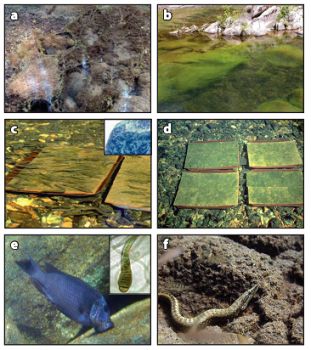Vadeboncoeur & Power, 2017
Attached Algae: The Cryptic Base of Inverted Trophic Pyramids in Freshwaters
Vadeboncoeur, Y. and Power, M.E. (2017)
Annual Review of Ecology, Evolution, and Systematics 48: 255-279
-
Eel, INVESTIGATOR
Abstract
It seems improbable that a thin veneer of attached algae coating submerged surfaces in lakes and rivers could be the foundation of many freshwater food webs, but increasing evidence from chemical tracers supports this view. Attached algae grow on any submerged surface that receives enough light for photosynthesis, but animals often graze attached algae down to thin, barely perceptible biofilms. Algae in general are more nutritious and digestible than terrestrial plants or detritus, and attached algae are particularly harvestable, being concentrated on surfaces. Diatoms, a major component of attached algal assemblages, are especially nutritious and tolerant of heavy grazing. Algivores can track attached algal productivity over a range of spatial scales and consume a high proportion of new attached algal growth in high-light, low-nutrient ecosystems. The subsequent efficient conversion of the algae into consumer production in freshwater food webs can lead to low-producer, high-consumer biomass, patterns that Elton (1927) described as inverted trophic pyramids. Human perturbations of nutrient, sediment, and carbon loading into freshwaters and of thermal and hydrologic regimes can weaken consumer control of algae and promote nuisance attached algal blooms.
Citation
Vadeboncoeur, Y. and Power, M.E. (2017): Attached Algae: The Cryptic Base of Inverted Trophic Pyramids in Freshwaters. Annual Review of Ecology, Evolution, and Systematics 48: 255-279 . DOI: 10.1146/annurev-ecolsys-121415-032340
 This Paper/Book acknowledges NSF CZO grant support.
This Paper/Book acknowledges NSF CZO grant support.
Explore Further


